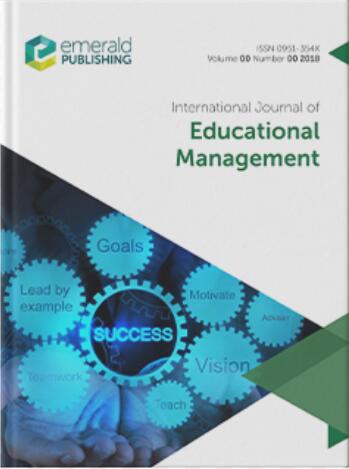Exploration and exploitation juggling for novice entrepreneurs: Examination of action complexity on the perspective of individual ambidexterity in entrepreneurial education
IF 6
2区 管理学
Q1 BUSINESS
引用次数: 0
Abstract
In action-based Entrepreneurial Education (EE), there are two important goals, including college students' entrepreneurial performance and motivation. In order to achieve these two goals, EE is trying to stimulate students' actions of exploration and exploitation by providing venture simulations. However, considering tensions between exploration and exploitation, as well as resource constraints faced by students as novice entrepreneurs, students need to juggle exploration and exploitation, leading to complicated actions. Motivated by this fact, this study examines students' exploration/exploitation juggling on the balanced dimension and the combined dimension based on ambidexterity theory.
Two hundred and forty-seven Chinese college students finished the measurements of exploration/exploitation juggling. Results of regression analysis show that on the balanced dimension, harmful effects exist in the enhancement of entrepreneurial performance if blindly narrowing the gap between exploration and exploitation. It means that simulations in EE should be designed to lead students to show inclination either on exploration or exploitation, instead of even distribution. On the combined dimension, although integration of exploration and exploitation doesn't contribute to performance, it works as a spur to entrepreneurial motivation. This means that simulations can be carefully managed tailoring to specific goals of EE other than performance, such as entrepreneurial passion. To conclude, the balanced and combined ambidexterity should be concerned in EE to give full play of students' advantages on the balanced dimension, at the same time, to fuel their enthusiasm for entrepreneurship on the combined dimension.
创业新手的探索与利用杂耍:创业教育中个体双元性视角下的行动复杂性考察
在行动型创业教育中,有两个重要的目标,即大学生的创业绩效和创业动机。为了实现这两个目标,EE试图通过提供风险模拟来激发学生的探索和利用行为。然而,考虑到探索和开发之间的紧张关系,以及学生作为创业新手所面临的资源限制,学生需要在探索和开发之间进行平衡,从而导致复杂的行动。基于此,本研究基于双灵巧性理论,从平衡维度和组合维度考察了学生的探索/剥削杂耍行为。247名中国大学生完成了探索/剥削杂耍的测量。回归分析结果表明,在均衡维度上,一味缩小勘探开发差距对创业绩效的提升存在不利影响。这意味着情感表达中的模拟应该设计成引导学生表现出探索或利用的倾向,而不是均匀分布。在组合维度上,勘探开发一体化虽然对绩效没有贡献,但对创业动机有刺激作用。这意味着模拟可以精心管理,以适应EE的特定目标,而不是性能,例如创业热情。综上所述,在电子商务中应该关注平衡和组合的双元性,以充分发挥学生在平衡维度上的优势,同时激发学生在组合维度上的创业热情。
本文章由计算机程序翻译,如有差异,请以英文原文为准。
求助全文
约1分钟内获得全文
求助全文
来源期刊
CiteScore
10.30
自引率
25.00%
发文量
136
审稿时长
64 days
期刊介绍:
The International Journal of Management Education provides a forum for scholarly reporting and discussion of developments in all aspects of teaching and learning in business and management. The Journal seeks reflective papers which bring together pedagogy and theories of management learning; descriptions of innovative teaching which include critical reflection on implementation and outcomes will also be considered.

 求助内容:
求助内容: 应助结果提醒方式:
应助结果提醒方式:


